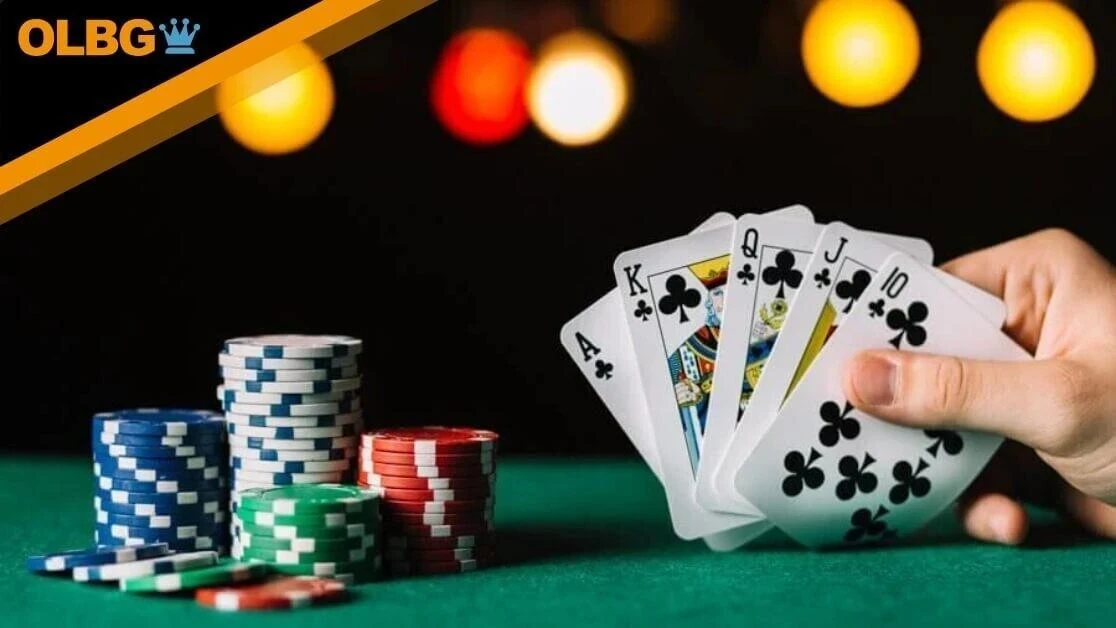
I've spent over 20 years inside the betting industry. I'll guide you to avoid the hype, ignore the noise, and steer clear of the common pitfalls that catch out everyday punters.
What is a Poker Face? Is it Just For Gambling? The Research Explained
A Poker Face is an expression used to describe a face that reveals no hint of a persons thoughts or feelings. Of course, something that's not required when playing at online casino sites, but live, poker players with a good poker face may be able to conceal whether they have a good hand or whether they are bluffing. In the popular card game, if a player has a good hand they don't want other players to fold their hands and stop betting. Alternatively if a player has a poor hand they can still win if other players fold thinking they have a good hand.
Whilst useful for gambling, the skill of having a good poker face can also be a benefit in every day life. People may want to hide the whole truth or conceal their thoughts and feelings in many situations.
OLBG commissioned a 2000 participant survey to find out about the UK's habits when it comes to telling the truth and using a poker face to disguise it. Are people from some regions better liars than others? When do people feel the need to use their poker face? How do people tell if others are lying to them? Do people give off signs that they are telling a lie?
This research was all backed up with an interview with body language expert Judi James, author of the book Poker Face, who tells us the signs to look out for to spot a liar and to understand if you make any obvious giveaways (tells) when you are telling a lie. We then built a fun quiz to see if you can spot some of these tells.
Further, OLBG ran the same survey for 2000 US citizens to find out about the USA's gambling and truth telling habits. Do Americans tell more lies than Brits? Who are the better liars?
Take The Quiz - Can You Spot a Liar?
Take the quiz now, before reading on. See if you can spot a liar. Then take it again after reading the hints from the interview with body language expert Judi James.
The Key Findings From Our Surveys
The tell-tale signs someone might be lying include avoiding eye contact and nervously talking - but even the most experienced 'poker-face' has a giveaway 'tell'. A study of 2,000 UK adults revealed an overwhelming majority consider themselves a cut above the rest when it comes to being able to spot a liar.
49 percent think they have a good or excellent poker face. Just one in 20 (five per cent) felt they had a terrible poker face.
When it came to their own 'tells' - a sign where someone is bluffing – fiddling with chips, sitting up in the chair when they have a good hand and trembling hands are the key signs to look out for during a game of poker.
When it comes to working out if you they are being lied to, 42 per cent said they were good at spotting when others were lying to them, while just nine per cent thought they were poor at it.
Many may think they are good at lying, but the smallest thing can easily give them away. Perhaps this is why so many people think they are good at spotting a liar, almost as many who think they are good at lying.
The research revealed when people think it’s a good time to employ their bluffing skills.
Playing poker (25 per cent), when someone asks if you like what they’re wearing and you don’t (25 per cent) and when someone makes you a horrible meal (23 per cent) are the best scenarios, according to research.
An identical study carried out at the same time in the US also revealed some interesting comparisons between bluffing and telling the truth between the two nations.
On average, Brits admit to deploying their poker face three times a day – slightly less than Americans who get theirs out four times a day.
Interestingly, more than two in five (42 per cent) of Americans think of themselves as someone who wears their heart on their sleeve and finds it difficult to hide their emotions.
UK adults said they lied four times a day on average, with Americans slightly ahead on 4.3 times a day. Americans also feel they are lied to slightly more than people in the UK (5.8 to 5.3 respectively).
Despite lying more and feeling they are lied to more, a huge 54 per cent said honesty was very important to them, compared to just 43 per cent of UK adults.
Within the UK there were some interesting regional differences in the data. People in the West Midlands and South West said they lied on average 3.5 times per day, whereas those in Scotland said they lied on average 5.6 times a day.
These figures were in line with how many times a day people felt they were lied to.
West Midlanders only thought they were lied to 4.5 times a day versus Scots at a huge 6.7 average.
Perhaps its about quality over quantity though as when they do lie, West Midlanders think they are good at it. Coming out on top of our survey, 46% of people from the West Midlands said they thought they were a good liar. Whereas only 32% of Scots would say they are a good liar.
But it seems the honesty isn't so important for most Scots. When asked the question, "How important, if at all, is honesty to you", Scotland was the lowest region in the "Very Important" category at just 35%.
How to Spot a Liar
The more you know about a person and their normal habits, the easier it will be. What is normal and how does that differ when someone is telling the truth to you or lying. Building up a picture over time will allow you to tell if someone is giving off a sign that they may be telling a lie.
Sometimes people will naturally be nervous, especially if under pressure or being interrogated so it may not be so easy to tell in these situations. But looking out for unusual patterns can give you some real insight. What about hiding all this if you want to get away with telling a fib?
Body language expert Judi James, author of Poker Face, said: "Body language is not a precise science and when you’re looking for signs of lying there is no such thing as a perfect body language ‘tell’, only clues and hints.
"Poker players in particular can use micro-gestures when they lie or bluff but a good liar could use this to their benefit, acting the ‘tell’ to suit themselves and confuse their opponents.
"Imagine you’ve spotted an opponent’s ‘tell’ when you’re playing poker. You’ve noticed that when they are bluffing their eyes dart quickly from side to side.
"This ‘tell’ is only useful to you if they’re not aware of it themselves though. If they know their own trait then they can use it to fool you too. Are they bluffing or is this a double-bluff?"
JUDI JAMES’ TELL TALE SIGNS OF A BLUFFER
EYE CONCEALMENTS
Our eyes do feel like the windows to the soul and it can be challenging to keep the eye expression on-message when we’re telling a lie, especially as the human eye has a vast range of subtle but still powerful expressions.
EYE DIRECTION/EYE DART
If you can pick up on a person’s normal eye direction when they are being honest you might pick up on the clue that they might be lying if their eyes suddenly swing in the opposite direction for one of their answers.
THE MICRO-SMIRK
Some people enjoy performing a lie and will feel an inner desire to boast about how clever they are being to be fooling people. This can emerge in a subtle smirk, where one side of the mouth rises slightly.
POKER FACE
This attempt to say nothing in case it might incriminate can be a whole-body performance but primarily the facial expression will be bland and immobile and the body stops moving as they speak.
EYEBROW SHRUGS
When someone lies there can be an attempt at bravado which can emerge in dismissive eyebrow shrug.
ASYMETRIC FACIAL EXPRESSIONS
When we lie the muscles tend to pull the features in lots of different ways, leading to a lop-sided smile or puckered smile with the mouth pulled down at the corners. One brow might raise while the other is frowning or one side of the mouth might be pulled down while the other is hiked up.
THE TONGUE-POKE
This is a gesture of disgust and rejection linked to rejecting food as a small baby. It can signal someone doesn’t like what is going on even when they’re pretending to be happy and relaxed.
HAND TO FACE GESTURES/THE NOSE TOUCH
Like the eye shielding rituals, a desire to conceal the face can lead to hands touching the face or nose; rubbing the face constantly as though tired in a bid to hide the expression of guilt.
SELF-COMFORT RITUALS
Fiddling with an earring or ear lobe; touching their own hair; playing with their clothing or tapping or fiddling with their fingers can all signal a desire to self-calm under pressure.
METRONOMIC GESTURES
The leg-swing, foot tap, finger-drumming etc. can all signal impatience related to a desire to get away from a difficult conversation or questioning.
Now take our quiz again - you should be able to get full marks now!



